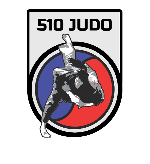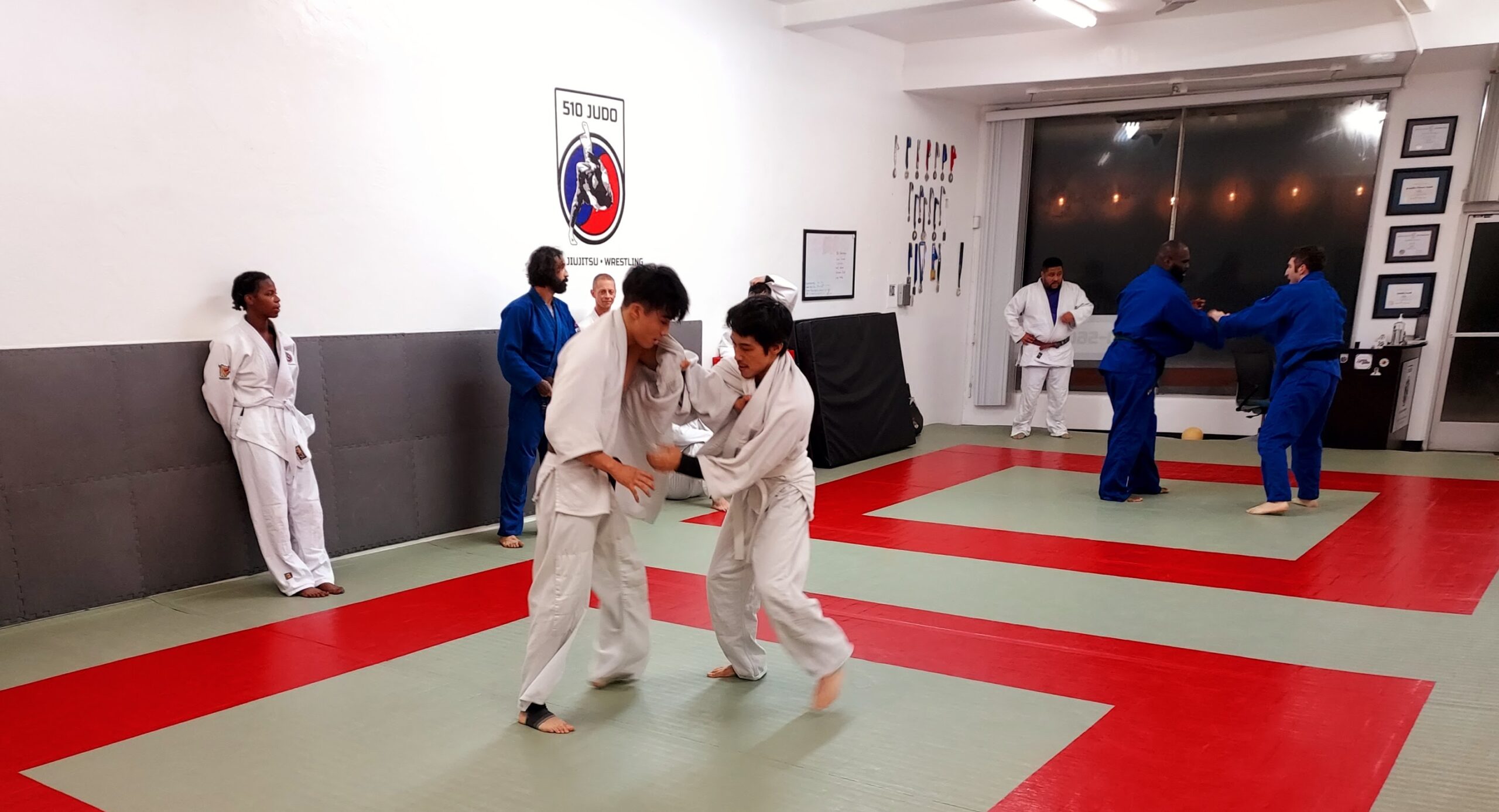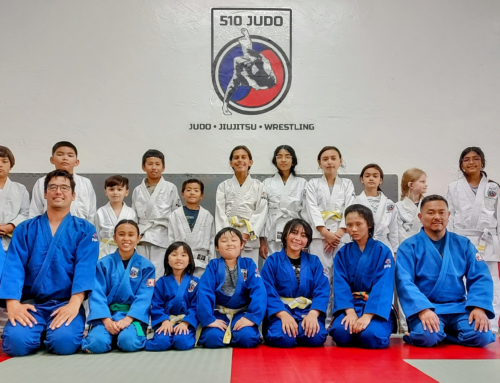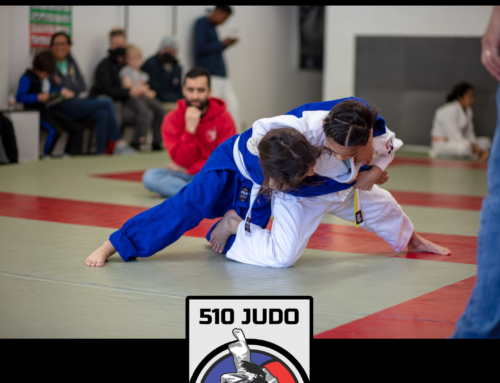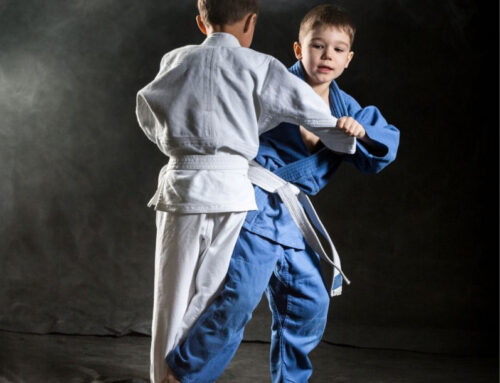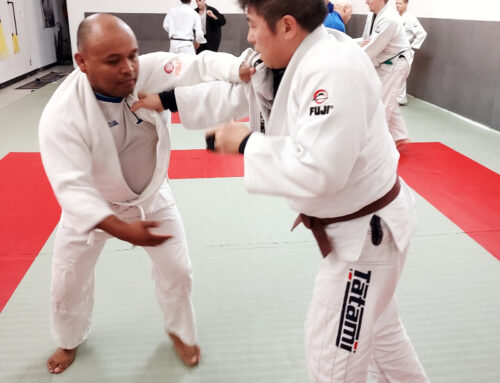Randori is a Japanese term used in judo meaning sparring or free play. The literal translation is “to pick from chaos” (ran = chaos, dori = to choose or pick something). There are many different types of randori, and to develop your judo, you should regularly try all of them, rather than get stuck on one.
The basic differences have to do with intensity level and rules. Shiai or competition is the highest intensity, with the greatest risk of injury and greatest reward in terms of experience – learning what works and what doesn’t against a resisting opponent. Rarely, very rarely, should randori ever approach this level of intensity. The one exception would be if you are preparing for a competition. In that case you will need to simulate the intensity of feeling and effort that a competition brings out.
This is similar to boxing training. A recreational boxing enthusiast is not going to do hard sparring several times a week. They would probably get very badly hurt, or they might hurt someone else.
(I’m speaking here for the average recreational judoka, a child or an adult who likes judo and goes to the dojo two to three times a week, and may go to a tournament 2-3 times per year. As far as how professionals train, I have heard stories but I have no direct experience. Professional judo is a completely different ballgame, requiring full time dedication, and professional levels of strength and conditioning.)
Here are some of the different types of randori we like to practice here at 510 Judo:
- “The kuzushi game.” This is a heavily restricted type of randori – you’re trying to get your partner on the ground, but you are not allowed to use any throws. No foot sweeps, no shoulder throws, no hip toss, nothing like that. Also, no grip fighting is allowed, you have to stick with a very standard sleeve and lapel grip – not even a high collar behind the neck type grip is allowed. So, what can you do? You can push, you can pull, you can spin your partner around, you can twist them, pull them up and down, and any combination of those moves. Despite all these restrictions, the kuzushi game can be a lot of fun, and very challenging. (Observant judoka will note that uki otoshi and sumi otoshi are allowed under these rules). It’s very useful in novice classes to develop the all important “feel” of judo while having a very low barrier to entry – even day one novices can grab a jacket and push someone.
- Offense/defense randori. Two rounds of randori – during the first round, one partner does only offense and the other does only defense. During the next round, the roles are reversed. In this type of randori it’s very important to coach the player on defense on the proper way to defend throws without violating any rules of contest judo, and keeping things safe for themselves and their partners. A heavily bent over posture and stiff arms may prevent the other player from throwing, but at that point you’re not really doing judo. Keeping arms relaxed like chains and utilizing footwork as the primary method of defense is preferred.
- Taking turns randori. During this round of randori, players alternate doing throws with movement and setups. For example Player A will throw first, so Player B will cooperate and let Player A pull or push them anywhere on the mat, until they are thrown. After each throw the roles switch, so then Player B will throw and Player A will take the fall. There should be no real defense, but the uke in each situation should strive to move realistically as if they were a resisting partner, and recognize when the throw is initiated so that they can allow the other player to complete their throw. Movement and setups are key to make this an actual round of randori rather than a round of nagekomi (throwing practice).
- Standard weeknight randori. This is a sort of middle ground, where both players are allowed to use almost any throw they can think of, as well as grip fighting and mid level defense. They’re not taking turns or cooperating, just trying to throw. But the intensity is still at mid level – there is time to stop and talk about a move, people are usually smiling and having a good time. At 510 Judo, the basic rules are: no sacrifice throws for anyone below brown belt, and moderate your intensity to an appropriate level based on the size and experience of your partner.
- King of the Hill randori. All judoka line up against the wall. Two pairs, or however many will fit on your mat, start off using standard weeknight randori guidelines. The first person to get thrown has to bow out and go back to the wall. The thrower stays in and faces a fresh opponent. The throw can be ippon or wazari, as long as it would score in a standard contest. As long as you win, you stay in. But the longer you stay in, the more tired you get. So someone who stays in as king of the hill for several rounds will eventually get thrown, we assume, if only due to fatigue.
- Competition style randori. Just as the name implies, we are getting ready for competition. The intensity is high, the time is set to the same amount of time as a regular match (currently four minutes for adults, three minutes for teens and veterans age 30 plus). Someone with referee experience may even be watching and weigh in about penalties and potential scores. To truly be ready for competition, transition to newaza must also be part of this randori.
- Grip fighting and entries only. The players fight for a superior grip and make an entry for a throw but do not complete the throw. The person who gets the better grip and uses it to make an entry for a throw has “won” the encounter – both players should then release their grip and restart from a neutral position.
As you can see, there are many ways to do randori, and it’s good to cycle through them. If you’re always only doing competition style randori, it’s easy to pick up injuries due to the intensity level. Also, during competition your aim is to win, not necessarily to get better at judo, so you usually stick with a small set of heavily practiced techniques or sets of techniques. If you only do randori in this same way, your judo will stagnate and you will stop learning new techniques.
If you only ever do one of the cooperative styles of randori, that can be very useful as far as it goes, but at some point you need to encounter some real resistance and test if your technique actually works against a resisting opponent.
I’m sure there are many more types of randori, and I always enjoy learning about new ways to keep it fresh in the training hall. If you have another way to do judo randori you’d like to share, please let me know.
Click here to reserve a free trial class for yourself or your child.
